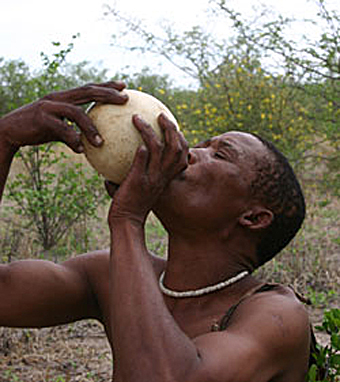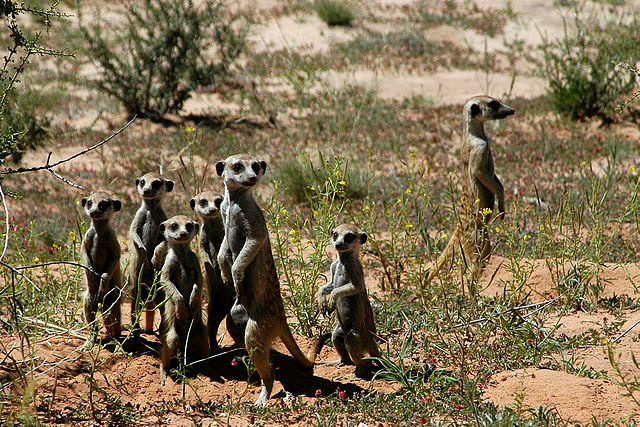A prolonged dry spell in the Kalahari Desert has prompted proposals to drill boreholes for wildlife but advocates for the San people argue that they too need more water. The apparent conflict between the needs of wildlife and of the G/wi and G//ana people, the predominant San societies in the Central Kalahari Game Reserve (CKGR) of Botswana, was described on November 18 by an article in Mmegi, a major Botswana news source.

The San people used to find water from natural sources in the desert and save it for drinking by using ostrich egg shells as storage containers. Now, they rely on running water, if possible, from boreholes and from large storage tanks in their communities. But the recent article indicated that the Kalahari Conservation Society (KCS) is planning to help the government drill five new boreholes in order to save the lives of some wildlife in the CKGR from the effects of the current drought. The boreholes will provide water for staff as well as for the wildlife in the reserve. “This is a drought mitigation measure due to climate change,” said KCS acting chief executive officer, Baboloki Autlwetse.
The news has irritated Bashi Thite, Councilor from Ghanzi Township East, who has complained in the past about the lack of secure water for the San residents of the CKGR settlements. He argued that wild animals should not have a higher priority than people in his district. “Provision of water to wild animals while there is insufficient water for human consumption is disheartening,” he told the reporter.
The commitment by the government to supply 5,000 liters of water per month to the San people living in six settlements within the CKGR—Molapo, Mothomelo, Metsiamanong, Gugamma, Kikao and Gope—is simply not enough, Thiti said. He argued that the government should continue to maintain boreholes, such as one in Mothomelo, in order to prevent water shortages from harming people. A two-minute YouTube video filmed in 2011 soon after the Mothomelo borehole was opened shows the people enjoying the luxury of having clean, running water rather than drinking from egg shells.
Mr. Autlwetse responded that different agencies of the government help their different constituencies in their own fashions: the Department of Water Affairs and Water Utilities Corporation is in charge of water for human communities and the Department of Wildlife provides for animals.

He added that since rainfall in recent years has been limited, surface pans have not received as much rainfall as they normally do, so water from underground sources from new boreholes will help the wildlife survive. He suggested that the wildlife are used to surviving in drought conditions, but that the provision of additional water in the protected area, the CKGR, is still needed.